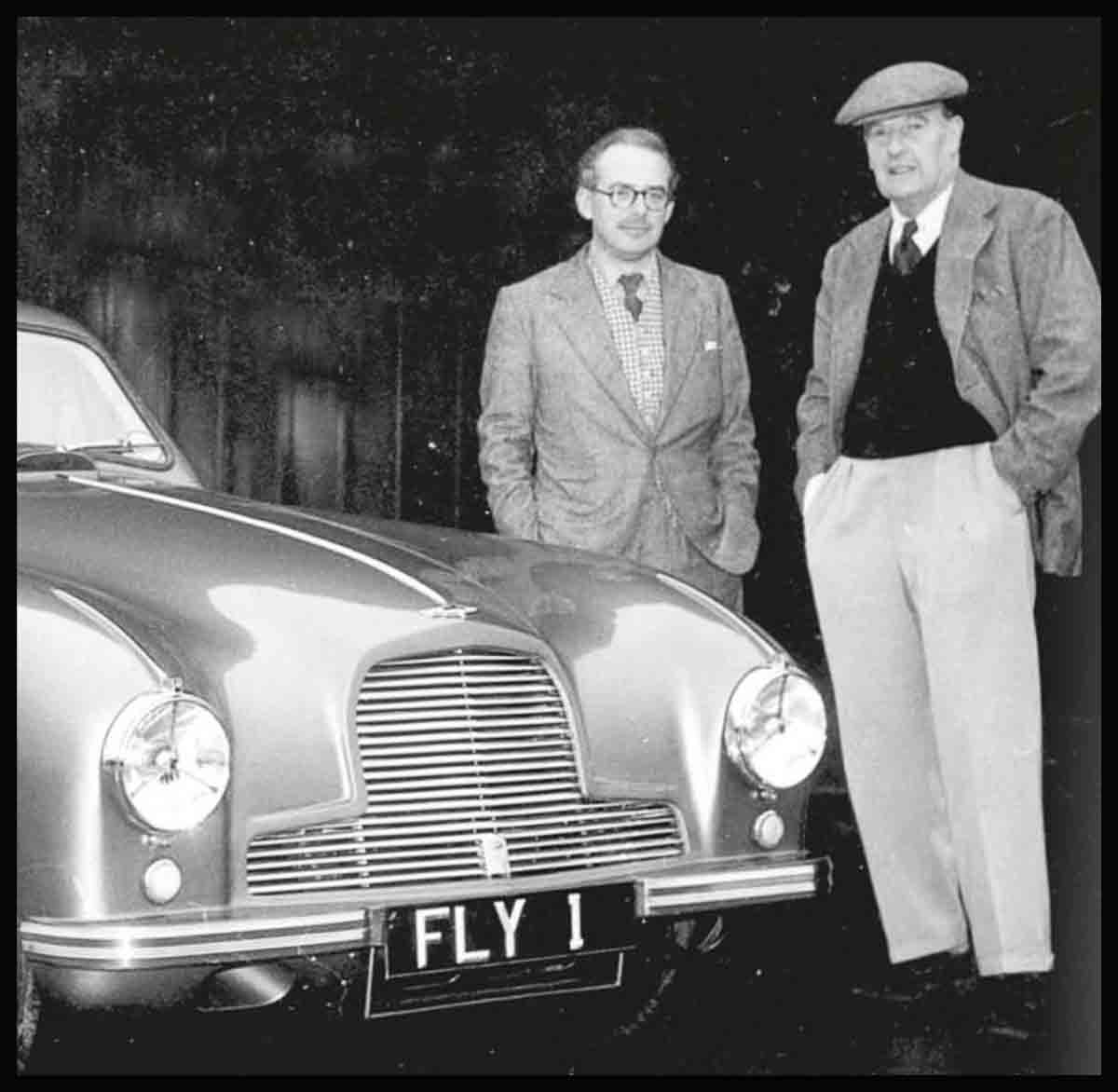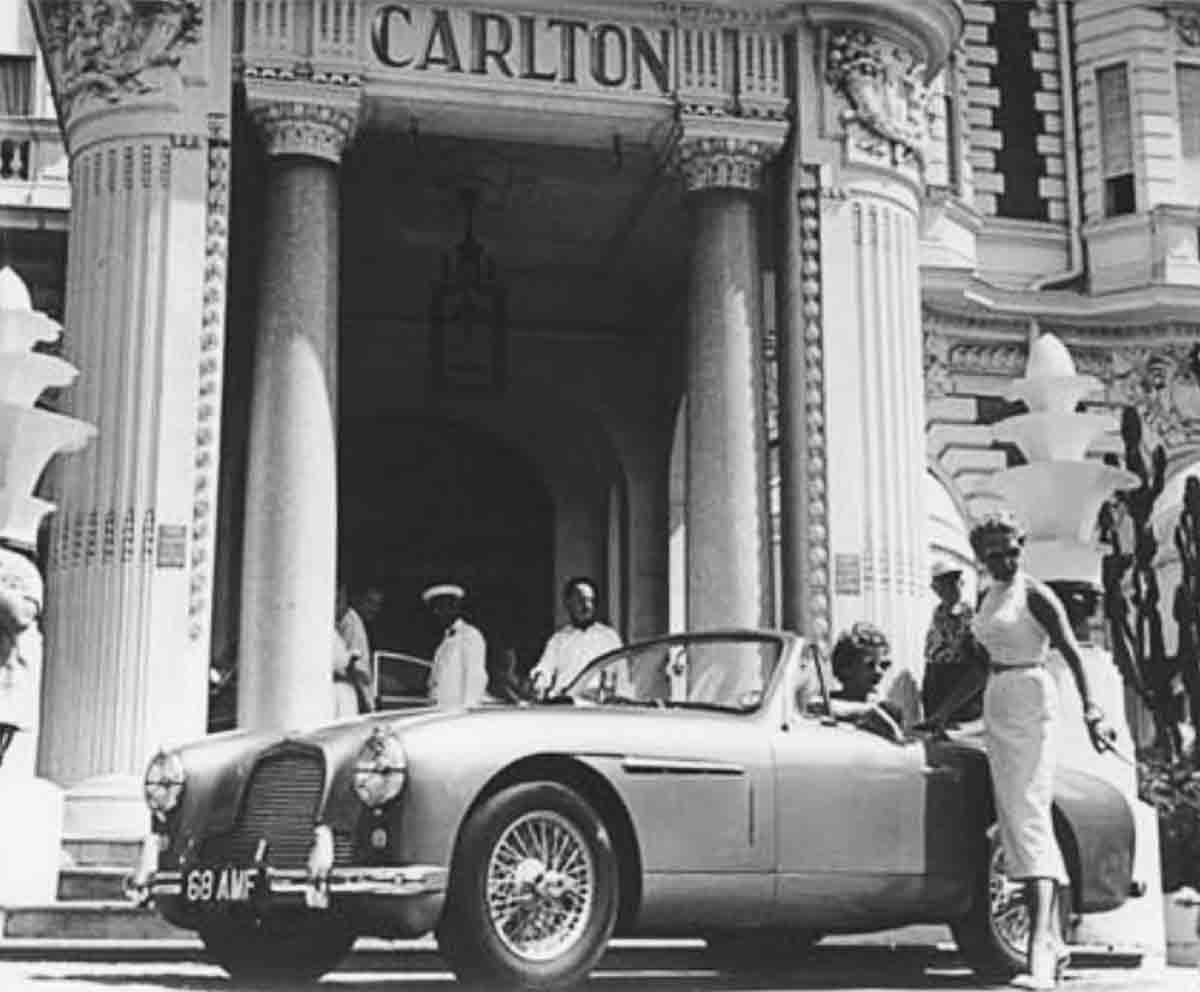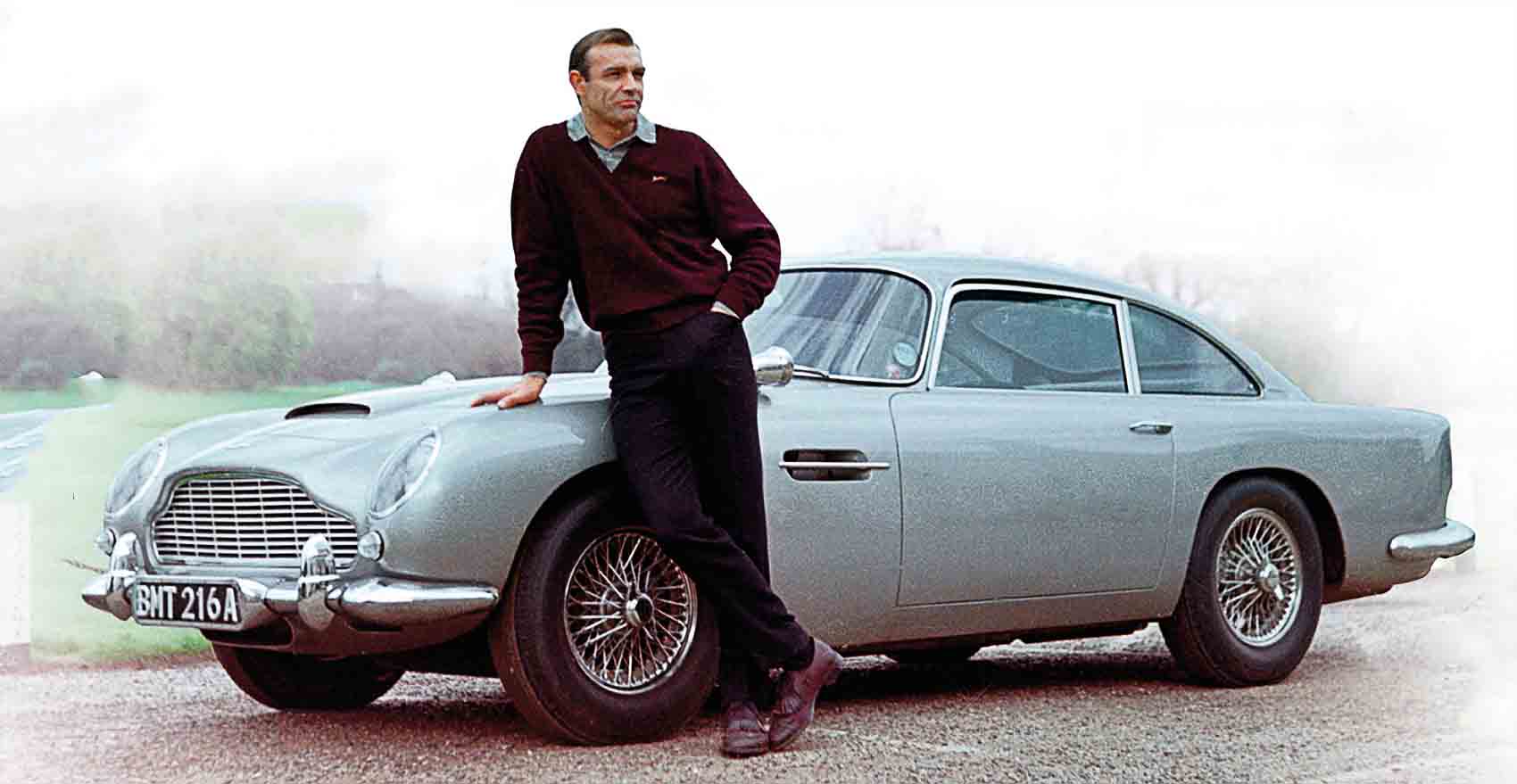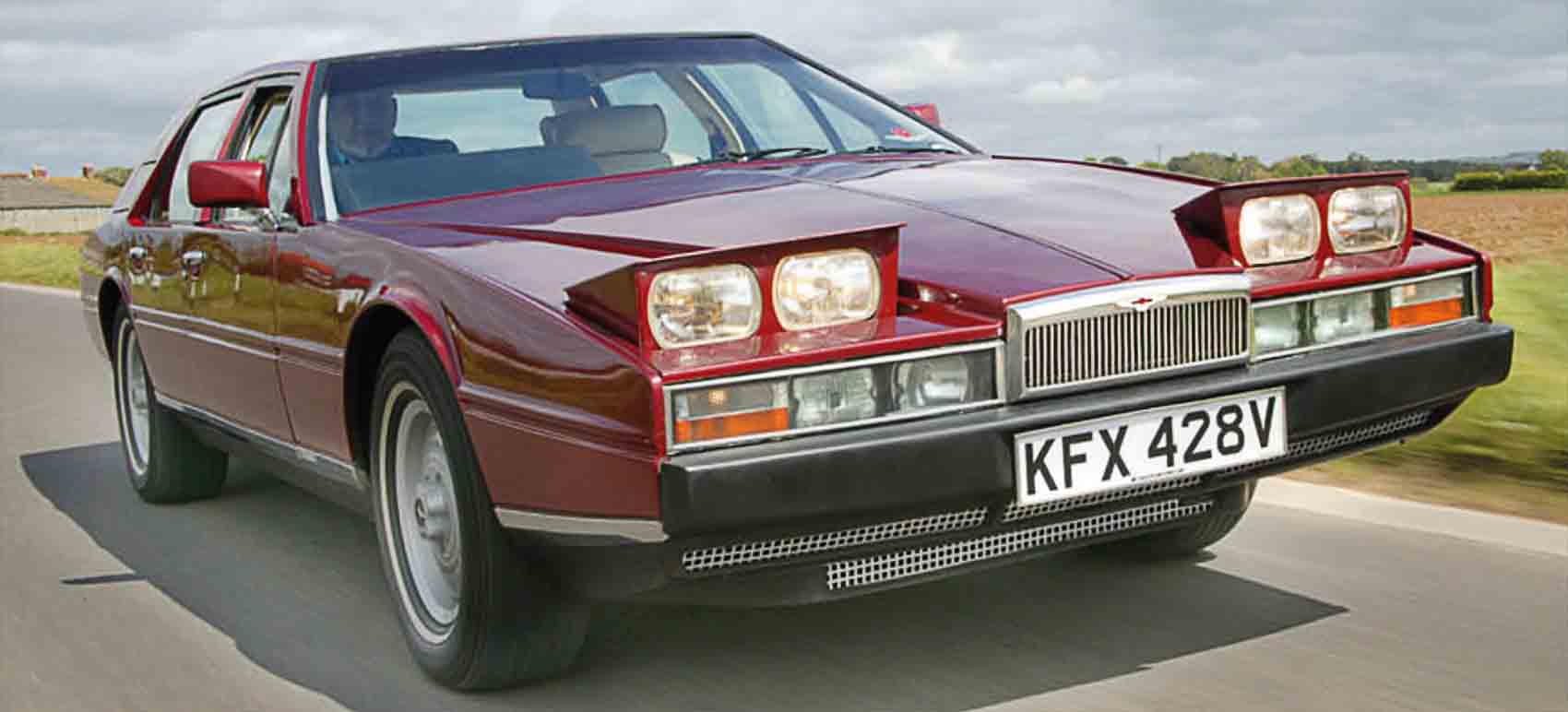
Great Marques—The Aston Martin Story
Founded in a London garage in 1913 by Robert Bamford and Lionel Martin, the sports car adopted part of the name of the famed motoring venue, the Aston Hill Climb, to reinforce its sporting character. Reborn after World War II, Aston Martins became synonymous with high-performance, style and racing credentials.
“It must be placed high on the list of the world’s most desirable grand touring cars.”
AUTOSPORT MAGAZINE ON THE ASTON MARTIN DB4GT, JANUARY 1962

The rare open version of the car pictured outside the Carlton Hotel in Cannes, south of France. The car could accelerate from 0-60 mph (0-96 km/h) in about 10 seconds.
AFTER THE PROTOTYPE had been thoroughly tested, including an effortless run on the Aston Clinton hillclimb course, it was registered for road use in 1915. But another seven years would pass before a production car went on sale, long after Robert Bamford had departed the enterprise. The first Aston Martin featured a responsive, 1.5-liter, four-cylinder engine and, although manufacture was laborious, it quickly gained a reputation as a high-quality sports car.
Aston Martins were well suited to the Le Mans 24-hour endurance race, making their debut at the course in 1928. Despite a change of ownership in 1926, a move to Feltham, Middlesex, and an all-new car created by the Bertelli brothers, fans of the marque were already enormously loyal.

Sean Connery relaxes on set during the making of the James Bond film Goldfinger with the Aston Martin DB5 that shot to fame as his villain-defeating steed.
After World War II, the firm was bought by industrialist David Brown, and merged with luxury car company Lagonda. The subsequent Aston Martin DB2 featured Aston’s capable chassis combined with Lagonda’s superb, 2.6-litre, six-cylinder engine. Even the rough-and-ready prototypes competed at Le Mans in 1949. However, the marque’s future was sealed at the course in 1950, when George Abecassis and Lance Macklin were fifth overall, and won the 3-liter class; Reg Parnell and Charles Brackenbury finished sixth and second in class, running like trains. In 1951 DB2s finished third, fifth, seventh, 10th, and 11th—a highly impressive five finishes from five starters.
David Brown was elated, but the achievement was eclipsed in 1959 when the DBR1 team topped the World Sports Car Championship winning the 620-mile (1,000-km) race at the Nürburgring, along with the Le Mans 24 hour.
Following Brown’s acquisition of the Tickford coach-building company to make Aston Martin bodies, the hand-built cars became ever more beautifully appointed and finished. In 1958 the company turned to Italy, collaborating with design house Carrozzeria Touring on production of the DB4. The Italian company’s elegant, fastback styling and lightweight construction expertise helped build a car that offered an all-new, 3.7-liter, straight-six engine, with 240bhp on tap. This gentlemen’s express featured disc brakes, overdrive, and optional automatic transmission, but still had a steely edge—DB4 GTs and the lightweight GT Zagatos made formidable racers on the track.

The Lagonda, first seen in 1976 and on sale three years later, shocked marque enthusiasts, but with strong demand from the Middle East it kept t he company afloat.
The car evolved into the DB5 in 1963—sleeker, more powerful, and, from 1964, became world famous as the car of choice for Sean Connery’s on-screen role as Ian Fleming’s secret agent James Bond. The 1965 DB6 and 1967 DBS preceded a brand-new V8 engine in 1969. David Brown sold the company in 1972, and it struggled during the 1970s and 80s. The Aston Martin Lagonda of 1976 was controversial with its starched, wedge-shaped profile, but it was popular in the Middle East, and the sales helped keep the company afloat until Ford acquired a share of it in 1987.
With Ford’s backing, Aston Martin launched a more affordable, six-cylinder model in 1993. The DB7 was hugely successful, with 5,000 produced up to 2001 (Aston’s grand total only reached the 10,000 mark in 1984). Subsequent models, the V12-powered DB9 and DB10, were also profitable. The company gained its first ever purpose-built factory at Gay don, Warwickshire, and in 2005 began production of the all-new V8 Vantage, a distinctive British alternative to the Porsche 911 and Ferrari 360 Modena.
In 2007 Ford sold the company to a Kuwaiti-funded consortium, and Aston Martin returned to top-level motor racing. Victories at Le Mans in the GT1 class in 2007 and 2008 were followed by a fourth overall place finish at the 2009 race with a new LMP1 car. That same year, the V12 Vantage GT made its racing debut at the Nurburgring 24-hour race, grabbing a class victory.
The V12 Vanquish of 2001 was the last of the old-school, upper-crust Astons. New, exclusive models included the VI2 Vantage and One-77 supercar in 2009. The company celebrated its centenary in 2013, and in 2015 announced its 800bhp Vulcan, a rear-wheel drive, track-only, limited-edition monster with all-carbon-fibre construction and a 7-liter, V12 engine. Only 24 were made, at £2 million apiece.
It is a quote. The Classic Car Book – The Definitive Visual History 2016




